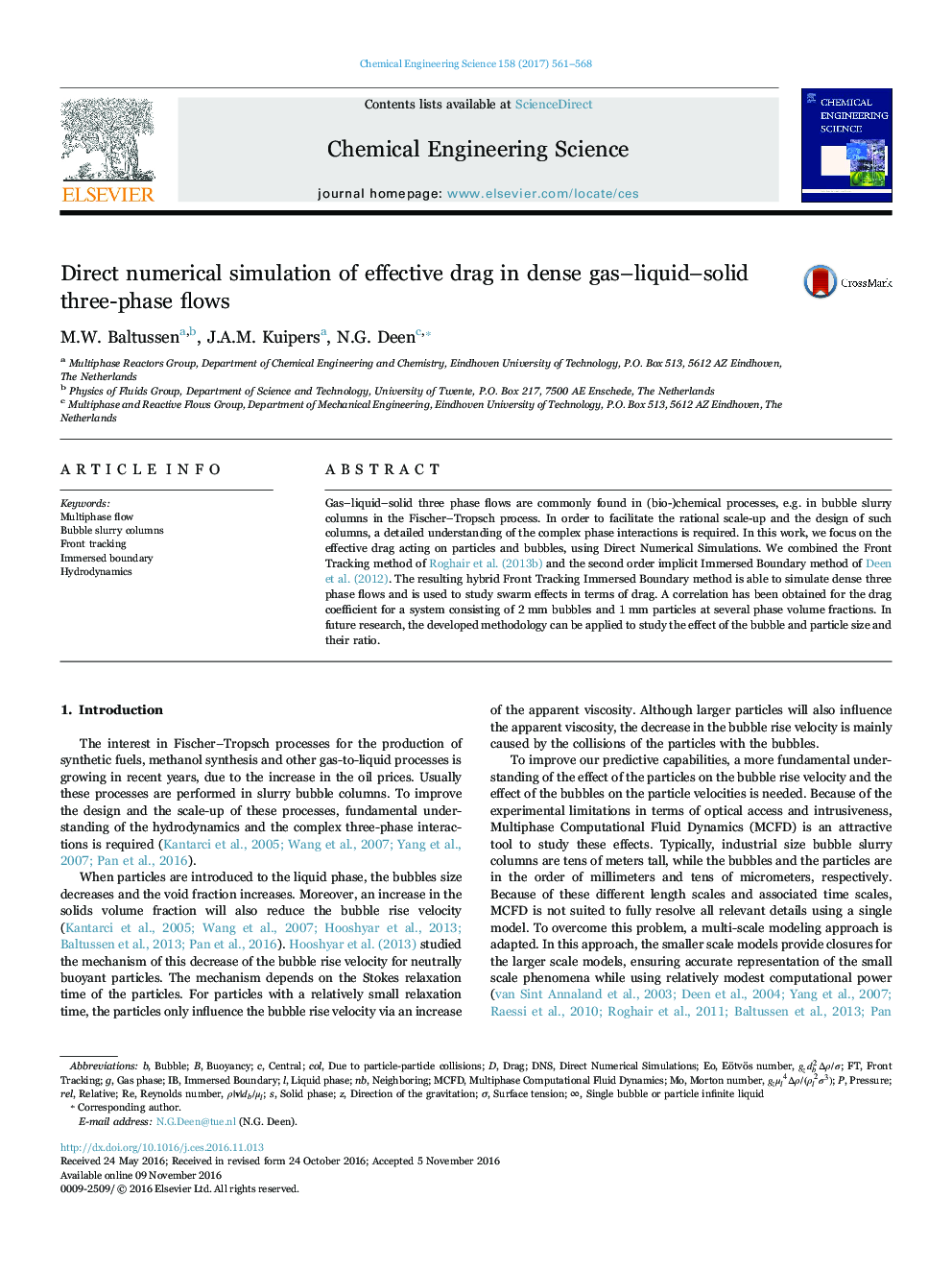| Article ID | Journal | Published Year | Pages | File Type |
|---|---|---|---|---|
| 6467994 | Chemical Engineering Science | 2017 | 8 Pages |
â¢A novel combined Front Tracking Immersed Boundary method is presented.â¢The combined method is used to numerically measure drag forces.â¢The presence of bubbles lead to an enhanced drag force on the particles.â¢The presence of particles lead to an enhanced drag force on the bubbles.
Gas-liquid-solid three phase flows are commonly found in (bio-)chemical processes, e.g. in bubble slurry columns in the Fischer-Tropsch process. In order to facilitate the rational scale-up and the design of such columns, a detailed understanding of the complex phase interactions is required. In this work, we focus on the effective drag acting on particles and bubbles, using Direct Numerical Simulations. We combined the Front Tracking method of Roghair et al. (2013b) and the second order implicit Immersed Boundary method of Deen et al. (2012). The resulting hybrid Front Tracking Immersed Boundary method is able to simulate dense three phase flows and is used to study swarm effects in terms of drag. A correlation has been obtained for the drag coefficient for a system consisting of 2Â mm bubbles and 1Â mm particles at several phase volume fractions. In future research, the developed methodology can be applied to study the effect of the bubble and particle size and their ratio.
Graphical abstractDownload high-res image (259KB)Download full-size image
